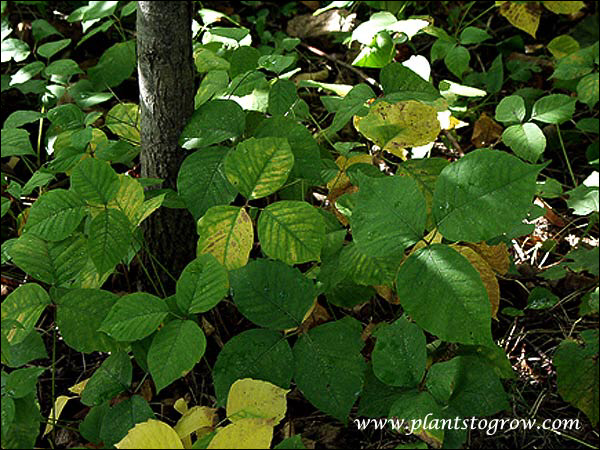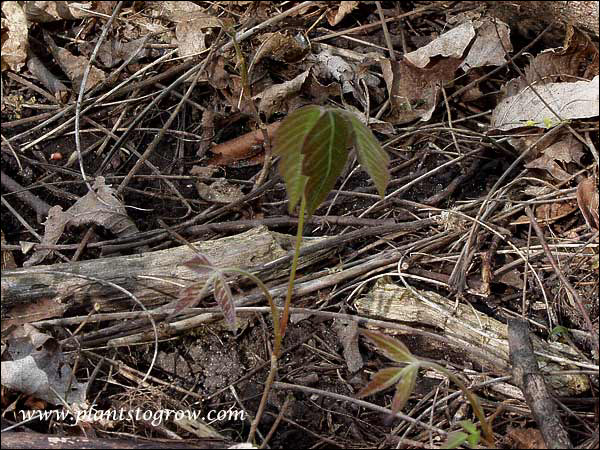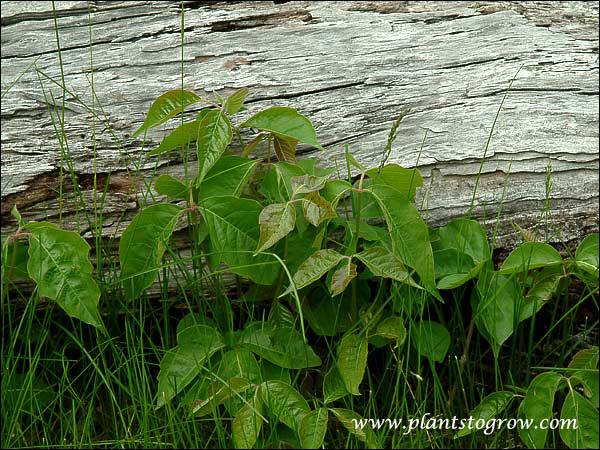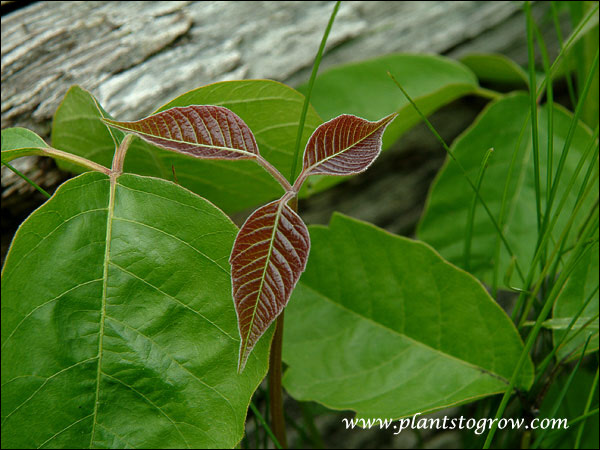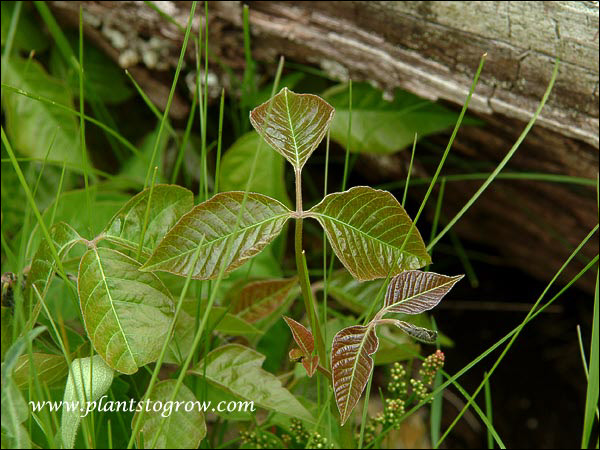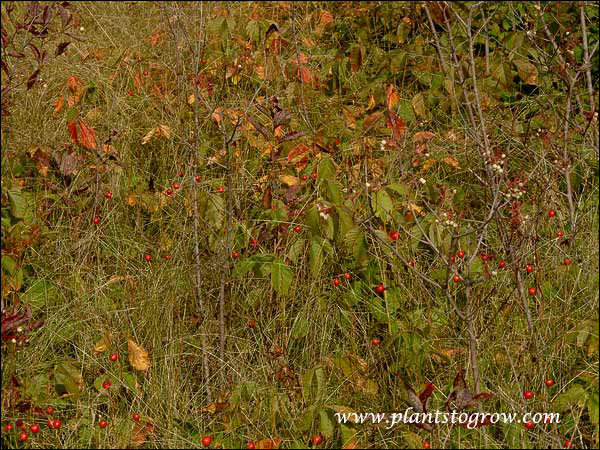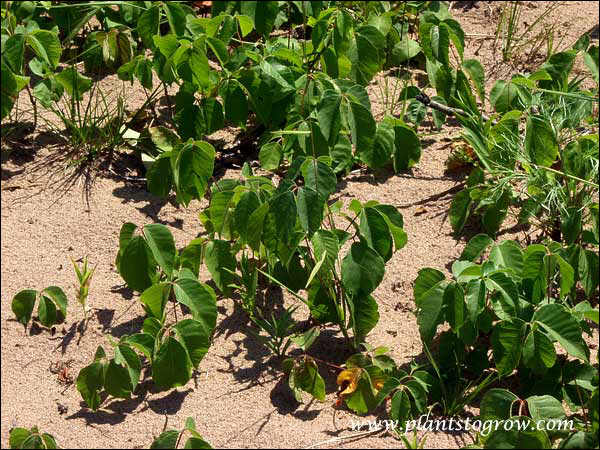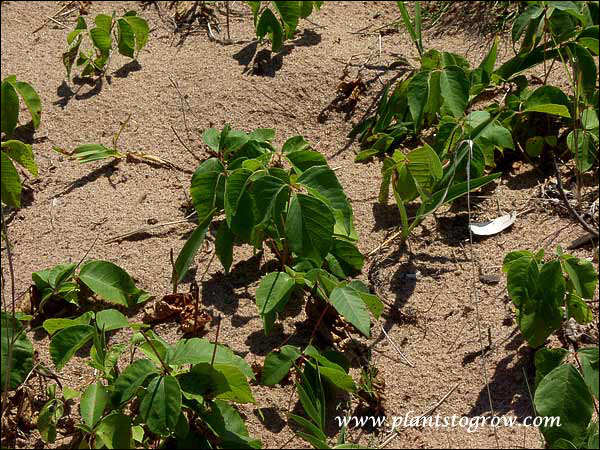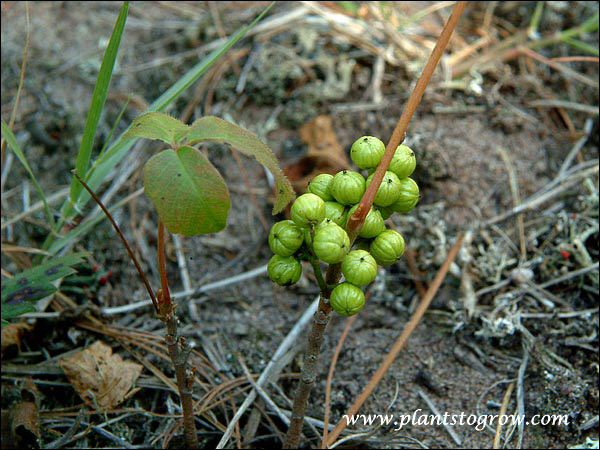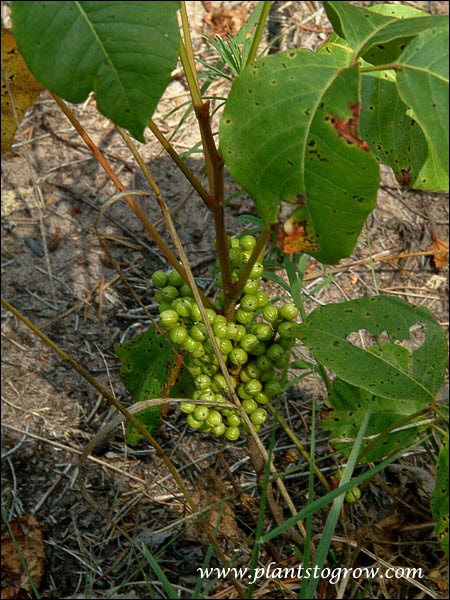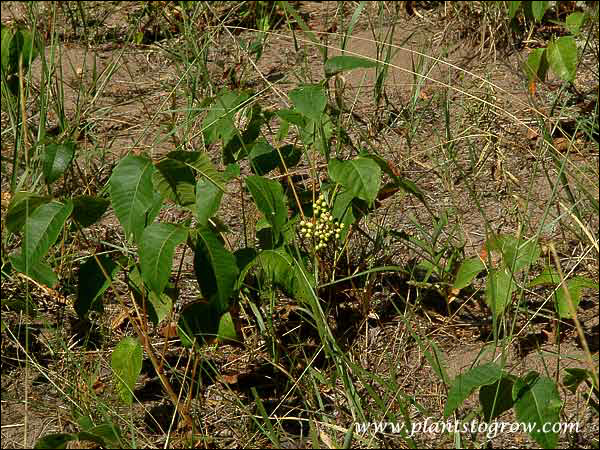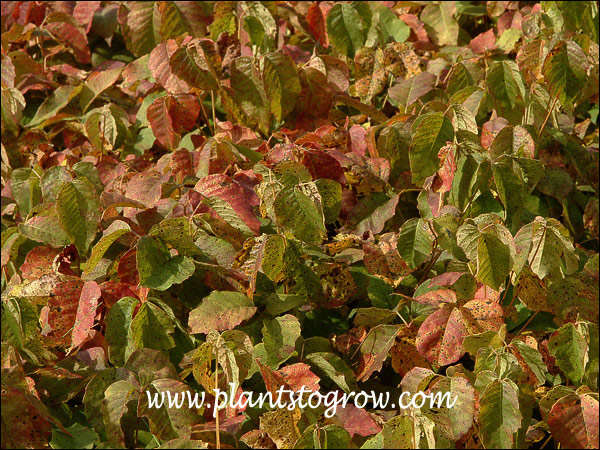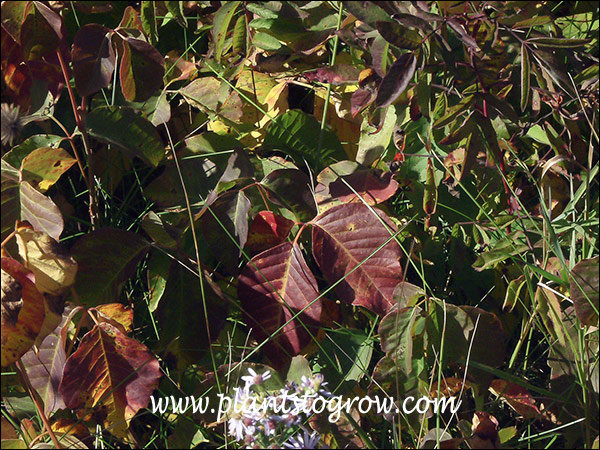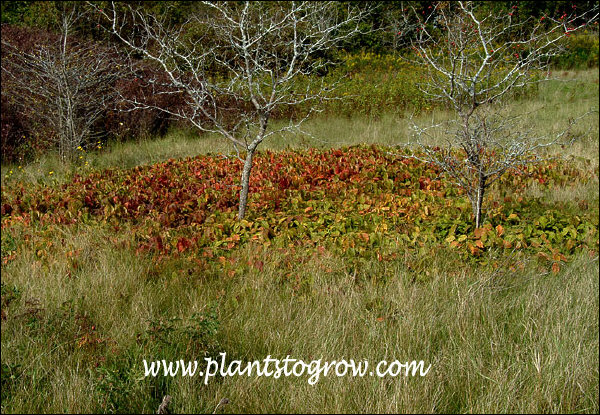| Description | An invasive, low growing woody plant that is very toxic to the touch. All parts of this plant are poisonous. |
|---|---|
| Plant Type | All Plants, Weeds |
| Hardiness Zone | Cold hardy to at least #4 |
| Sunlight | full to shade, seems to prefer edges of woods in the semi-shade |
| Moisture | average |
| Soil & Site | average |
| Flowers | small, 1/8" green flowers grow from branching clusters in the axils |
| Fruit | white waxy berries, ate by birds |
| Leaves | A compound leaf with 3 leaflets the center one being the largest. The leaf edges are entire or a few coarse teeth. Leaves alternate on the stem. They emerge in the spring with a bronze sheen; fall color is red to deep burgundy red depending on the amount of sun. |
| Dimensions | low less than a foot |
| Maintenance | Difficult to remove once established. |
| Propagation | Who wants to??????? Reported to have been imported to places in Europe and used as a ground cover plant for erosion control. |
| Misc Facts | This plant is listed in many sources as Rhus radicans, a catch all term for many types of look-alike poisonous plants. |
| Author's Notes | One day I was working in a new clients garden, I was on my hands and knees, working backwards pulling weeds. An than I noticed "what the #!#*" I was kneeling in Poison Ivy. Needless to say I got a bad case of redness, blisters and itching on my arms. Last year (2012) I bought a pair of long rubber gloves and carefully pulled out the plants and double bagged them. Some of the runners were 10-15 feet long. Gloves were also disposed. The worst thing about this experience is I didn't take any pictures. I missed a great photo opt. |
| Notes & Reference | The reaction from poison ivy is produced by an oil called Urushiol. It can remain on clothes and spread by touch. |

Cart
